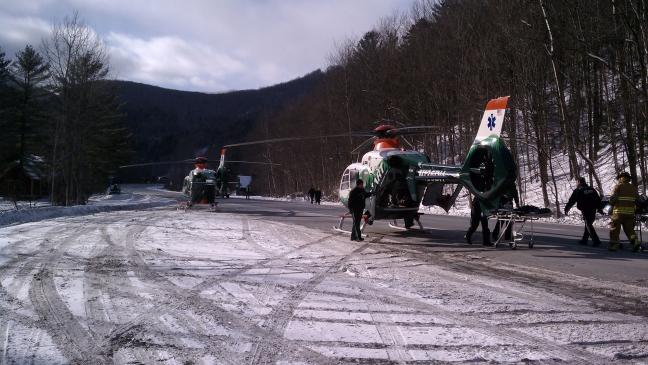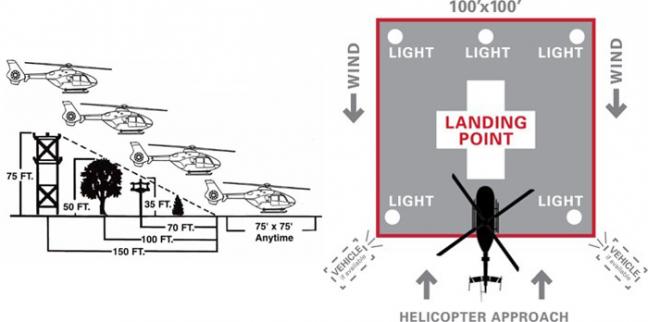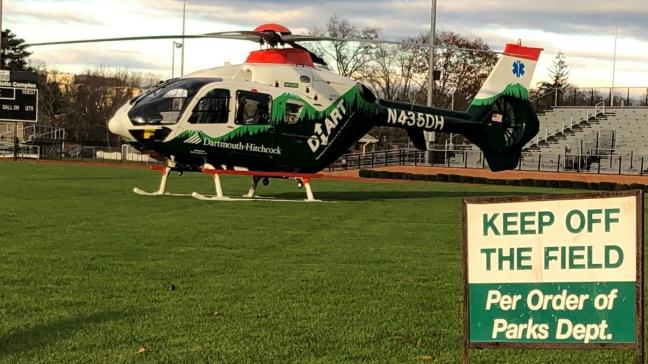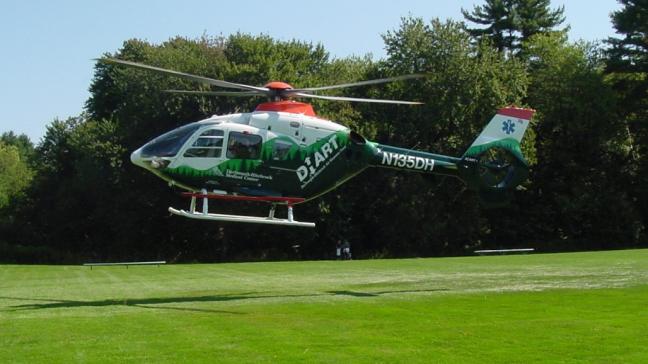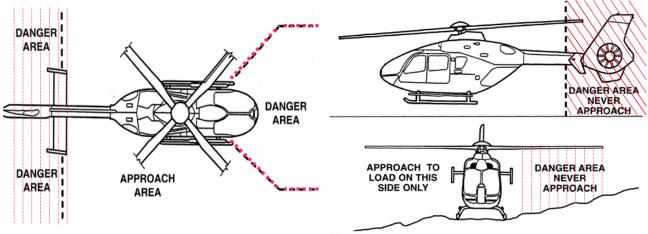The Dartmouth Hitchcock Advanced Response Team (DHART) offers ground safety courses for EMS providers. These courses help providers learn about DHART capabilities and how to prepare a landing zone for the helicopter.
Ground safety courses
A ground safety course is led by a DHART crewmember at the requestor’s location. The purpose of the course is to train EMS providers to be Landing Zone Coordinators (LZ Coordinators). Covered topics will include:
- Capabilities of crew and aircraft
- Emergency procedures in the event of a crash
- General idea of how DHART makes weather decisions
- How we partner with EMS providers
- Overview of DHART including locations, crew, and equipment available
- Overview of when and how to request a transport and when to request
- Preparation of Landing Zone
- Safety precautions taken before and during flight
Safe landing zones
Part of being an effective LZ Coordinator is learning the necessary guidelines for a safe landing zone. These are:
- Daytime: 75ft x 75ft
- Nighttime: 100ft x 100ft
- Level space
- Free of obstructions and debris
- Loose items are secured - aircraft will generate 90 mph winds
- Allows for safe approach and departure
- Grass should be less than 2 feet high and all dirt watered down as needed
- Snow should be packed down
Communicating with the aircraft
LZ Coordinators will learn to communicate with the aircraft, including which radio channels to use and what key information to pass on.
- New Hampshire agencies: Use V MED 29
- Vermont agencies: Use V TAC 4
The LZ Coordinator will be the only point of contact for the pilot. They will have sole responsibility for the landing zone.
The pilot will be looking for the following information on initial contact:
- Describe markings and obstacles such as wires, poles, trees, vehicles, buildings, and loose objects.
- The use of compass headings to describe obstacles, e.g.; “Wires border the LZ to the West” is preferred over “There are wires on my left side”.
- Estimate wind speed, direction, and gusts. The LZ Coordinator should face the LZ with their back to the wind.
- If any danger is seen during the approach, announce "DHART stop."
This is an example of an LZ Coordinator report:
“DHART 2 this is Kittery LZ Command. Your LZ is a baseball field, approximately 150ft by 150ft located on the south side of the school building. It is marked by four beacons. There are large trees on the northeast perimeter and wires running east/west along the south perimeter. There are slight gusts from the west.”
Final approach
As the helicopter is entering the final approach, the LZ Coordinator and any other personnel in the landing zone should do the following:
- Ensure eye and ear protection.
- Limit activity. NO vehicle activity.
- Light discipline at night. The crew may ask for lights to be turned off.
- Do not light flares.
- If any danger is seen during the approach announce, "DHART STOP".
- Limit radio communication to essentials only
- In case of communication failure and there is danger, wave off the helicopter by crossing your arms over your head repeatedly. The helicopter will climb and re-establish communications.
After landing
There are several important steps and precautions after landing and before a patient is loaded on. They include:
- Never approach the aircraft unless signaled to do so by a crew member
- No smoking
- Keep vehicles and bystanders back
- No vehicle movement
- Be aware of the helicopter danger areas (shown below).
